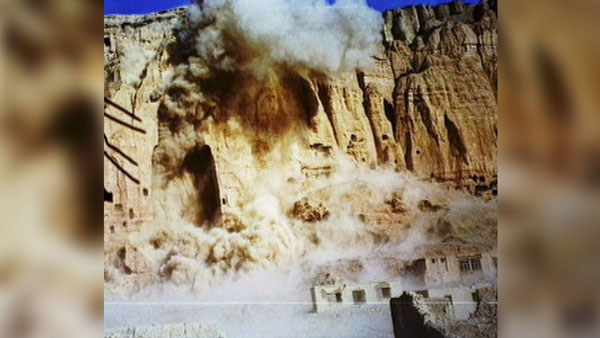News
The Taliban may be hunting for Afghanistan’s most famous treasure
View(s): With the Taliban takeover of Afghanistan, the country’s archaeological remains face a grim future even if the extremist Islamic group decides not to loot or intentionally destroy them.
With the Taliban takeover of Afghanistan, the country’s archaeological remains face a grim future even if the extremist Islamic group decides not to loot or intentionally destroy them.
Some news reports suggest the Taliban are already hunting for one of the country’s most famous caches; the so-called “Bactrian Treasure” is a collection of more than 20,000 artifacts, many made of gold, that were found in 2,000-year-old graves at a site called Tillya Tepe in 1978. The treasure was kept in the National Museum of Afghanistan and was on display at the presidential palace, but its present location is unknown.
Other archaeological remains that could be threatened by the Taliban include Mes Aynak, a Buddhist city that flourished around 1,600 years ago. The city was located along the iconic Silk Road and was used for both trade and worship; numerous ancient Buddhist monasteries and other ancient Buddhist artifacts are buried there. When the Taliban ruled Afghanistan between 1996-2001, they destroyed many of these Buddhist artifacts, including two massive sixth-century statues known as the “Buddhas of Bamiyan” that were carved into a cliff. The future of Mes Aynak looks particularly bleak as sources say that all the equipment used for excavation and conservation at the site is gone; and the Taliban have been visiting the site.
“The situation for culture heritage is not OK, because right now no one is taking care of the sites and monuments,” said Khair Muhammad Khairzada, an archaeologist who led excavations at Mes Aynak. “All archaeological sites in Afghanistan are [at] risk,” said Khairzada, noting that there is “no monitoring, no treatment and no care, all departments in all province [are] closed.” Khairzada was forced to flee to France to escape the Taliban.
Khairzada said that the equipment they used for excavation and conservation at Mes Aynak is “gone.” China holds mining rights in the nearby areas and even before the Taliban took over archaeologists feared that parts of the site could be destroyed if it were turned into a mine.
Julio Bendezu-Sarmiento, who was director of the French Archaeological Delegation to Afghanistan, said that he has learned that the Taliban have visited Mes Aynak but is uncertain why. There had been plans to hold an exhibition of artifacts from Mes Aynak and other Afghanistan sites in France in 2022, but the Taliban captured Kabul before artifacts could be transported.
So far there have been no reports of the Taliban intentionally destroying artifacts, and the Taliban leadership has issued statements saying that they will protect archaeological sites; whether the Taliban will actually follow through on their promises is unknown.
Along with his team, Gil Stein, a professor at the University of Chicago’s Oriental Institute who leads the Afghan Heritage Mapping Partnership, has been using satellite imagery to map and monitor thousands of archaeological sites in Afghanistan. Stein estimates that they have mapped out the location of about 25,000 archaeological sites in Afghanistan so far. Looting is a long-running problem in Afghanistan, but Stein said that so far he has found no evidence that the Taliban have been supporting it.
While the Taliban took control of Kabul and parts of northern Afghanistan recently, they have been in control of parts of southern Afghanistan for several years. Areas in the south that the Taliban have controlled for years don’t have the large-scale looting that was seen in territories controlled by the Islamic State group (ISIS or ISIL).
However, the team has found many cases in southern Afghanistan where agricultural fields, which often grow opium, were built over archaeological sites. The Taliban “didn’t need to sponsor looting because they have been making such an enormous amount of money from the opium trade,” Stein said.
The northern areas of Afghanistan, which the Taliban has only recently taken over, hold far more archaeological sites than the southern areas. After examining recent satellite imagery of northern Afghanistan, Stein’s team saw “battle-related damage” but not new cases of wide-scale looting.
Only time will tell if the Taliban will refrain from looting or destroying archaeological sites, he said. In one encouraging event, the Taliban posted guards outside the National Museum of Afghanistan, said Stein, noting that during the 2003 US invasion of Iraq there were no guards posted outside the Baghdad Museum where looting took place during the chaos.
Over the last two decades, some artifacts that were looted or stolen from Afghanistan were found in the United States and repatriated to Afghanistan. As far as Stein knows, artifacts that were repatriated are still in the National Museum of Afghanistan, he said.
Courtesy Live Science

